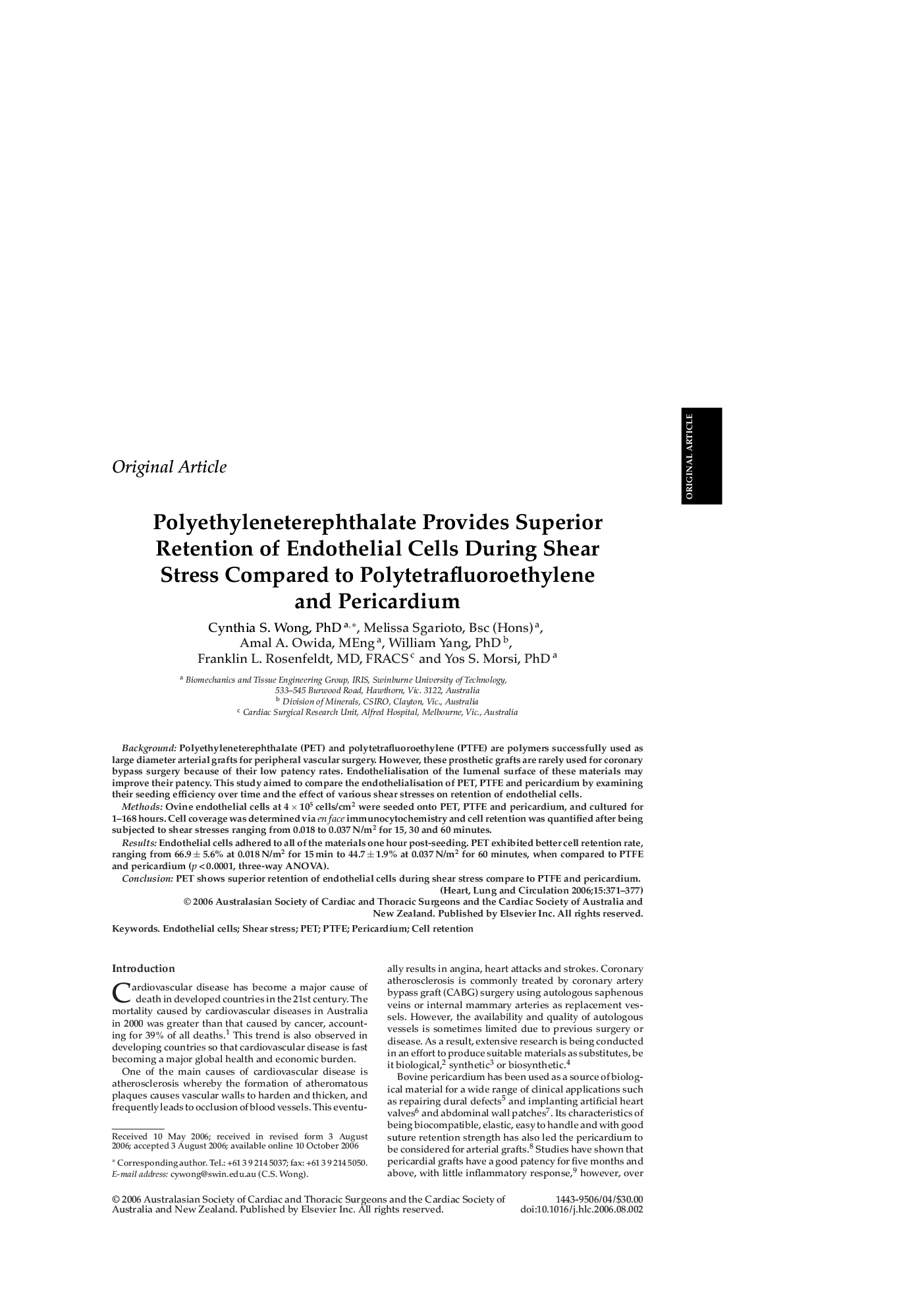| Article ID | Journal | Published Year | Pages | File Type |
|---|---|---|---|---|
| 2920730 | Heart, Lung and Circulation | 2006 | 7 Pages |
BackgroundPolyethyleneterephthalate (PET) and polytetrafluoroethylene (PTFE) are polymers successfully used as large diameter arterial grafts for peripheral vascular surgery. However, these prosthetic grafts are rarely used for coronary bypass surgery because of their low patency rates. Endothelialisation of the lumenal surface of these materials may improve their patency. This study aimed to compare the endothelialisation of PET, PTFE and pericardium by examining their seeding efficiency over time and the effect of various shear stresses on retention of endothelial cells.MethodsOvine endothelial cells at 4 × 105 cells/cm2 were seeded onto PET, PTFE and pericardium, and cultured for 1–168 hours. Cell coverage was determined via en face immunocytochemistry and cell retention was quantified after being subjected to shear stresses ranging from 0.018 to 0.037 N/m2 for 15, 30 and 60 minutes.ResultsEndothelial cells adhered to all of the materials one hour post-seeding. PET exhibited better cell retention rate, ranging from 66.9 ± 5.6% at 0.018 N/m2 for 15 min to 44.7 ± 1.9% at 0.037 N/m2 for 60 minutes, when compared to PTFE and pericardium (p < 0.0001, three-way ANOVA).ConclusionPET shows superior retention of endothelial cells during shear stress compare to PTFE and pericardium.
